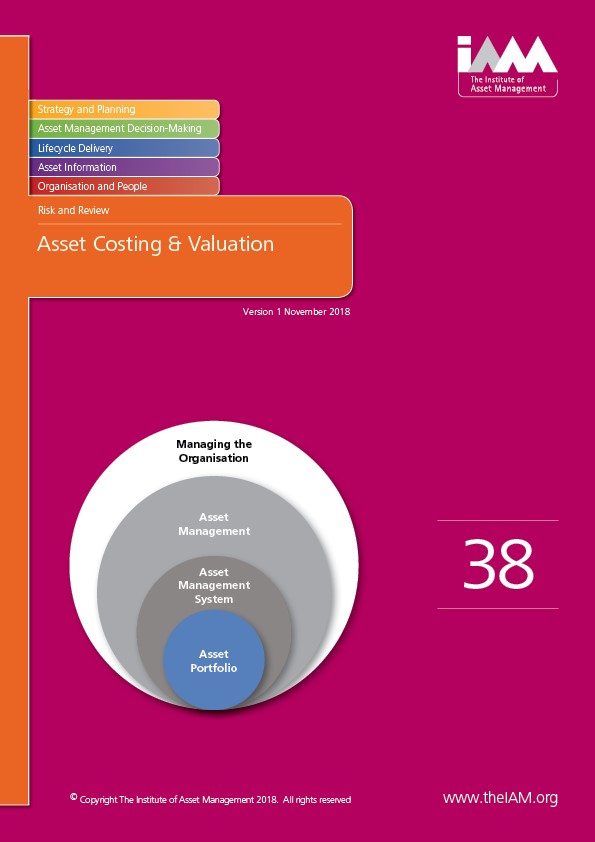SSG 38: Asset Costing & Valuation
Version 1.0 November 2018
Asset Management and finance are inextricably linked. Organisations which rely on assets for the delivery of products or services need to spend money on creating, caring for and ultimately disposing safely of assets. The majority of the associated asset management activities rely on good interworking between asset managers and finance professionals, essential for the achievement of corporate objectives and the delivery of value to stakeholders and to satisfy external reporting needs.
This guidance document aims to provide a bridge between the worlds of finance and asset management. Whilst the document talks about “Accounting” and “Asset Management” it does not seek to suggest that these functions exist in separate silos. The intent is merely to show how those who are responsible for different aspects of the delivery of corporate objectives depend on each other.
The guidance addresses the main processes of Asset Management and how they interact with the Accounting discipline. It provides some help regarding the meaning if key terms to help with the development of a shared language. It also provides guidance on the types of disclosure in external reporting that are possible through shared understanding and common processes.
Establishing a close link between Accounting and Asset Management delivers numerous benefits including:
- A more holistic view of the value that the organisation delivers to its stakeholders.
- Better understanding of the costs and revenue within business and the drivers for these items.
- Ensure compliance with regulators and financial accounting standards.
All of these drivers are about demonstrating and delivering a better understanding of the business and the provision of evidence to support these.
Preview This SSG By Clicking Here
With thanks to our sponsors of this publication.
| CONTENTS | |
|---|---|
| Acknowledgements | ii |
| 1 INTRODUCTION |
1 |
| 2 INTRODUCTION TO SUBJECT SPECIFIC GUIDELINES 1.1 Purpose of the SSGs 1.2 The SSGs in context 1.3 SSGs and the issue of Complexity versus Maturity 1.4 Further reading |
2 2 2 2 3 |
| 3 ACCOUNTING AND ASSET MANAGEMENT 3.1 Accounting Standards 3.2 Relevant Accountancy Policies and Asset Management 3.3 Accounting in ISO 55000 |
4 4 5 5 |
| 4 PROCESS AND INFORMATION FLOW BETWEEN THE ACCOUNTING AND ASSET MANAGEMENT DISCIPLINES |
6 |
| 5 ASSET MANAGEMENT STRATEGY AND PLANNING 5.1 Strategy/Policy 5.2 Demand Analysis 5.3 Strategic Planning 5.4 Asset Management Planning |
9 9 10 11 14 |
| 6 ASSET MANAGEMENT DECISION MAKING 6.1 Capital Investment Decision Making 6.2 Operations and Maintenance Decision Making 6.3 Life Cycle Cost and Value Optimisation |
15 15 18 19 |
| 7 LIFE CYCLE DELIVERY 7.1 Asset Creation and Acquisition 7.2 Asset Operations and Maintenance Delivery 7.3 Asset Decommissioning and Disposal |
20 20 22 22 |
| 8 ASSET INFORMATION 8.1 Technical alignment requirements 8.2 Financial Reporting System and Requirements 8.3 Data Registration Process 8.4 Planning, budgeting and forecasting |
24 24 25 25 26 |
| 9 RISK AND REVIEW 9.1 Risk 9.2 Management Review, Audit and Assurance 9.3 Asset Costing and Valuation 9.4 Stakeholder Engagement |
28 28 31 34 35 |
| 10 GUIDE TO COMMON ACCOUNTING TERMS |
39 |




